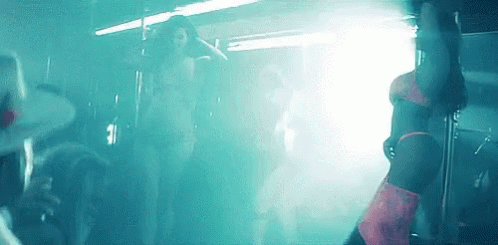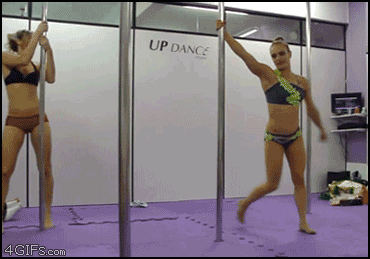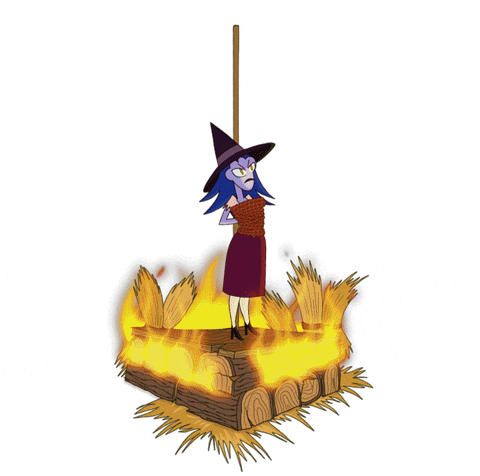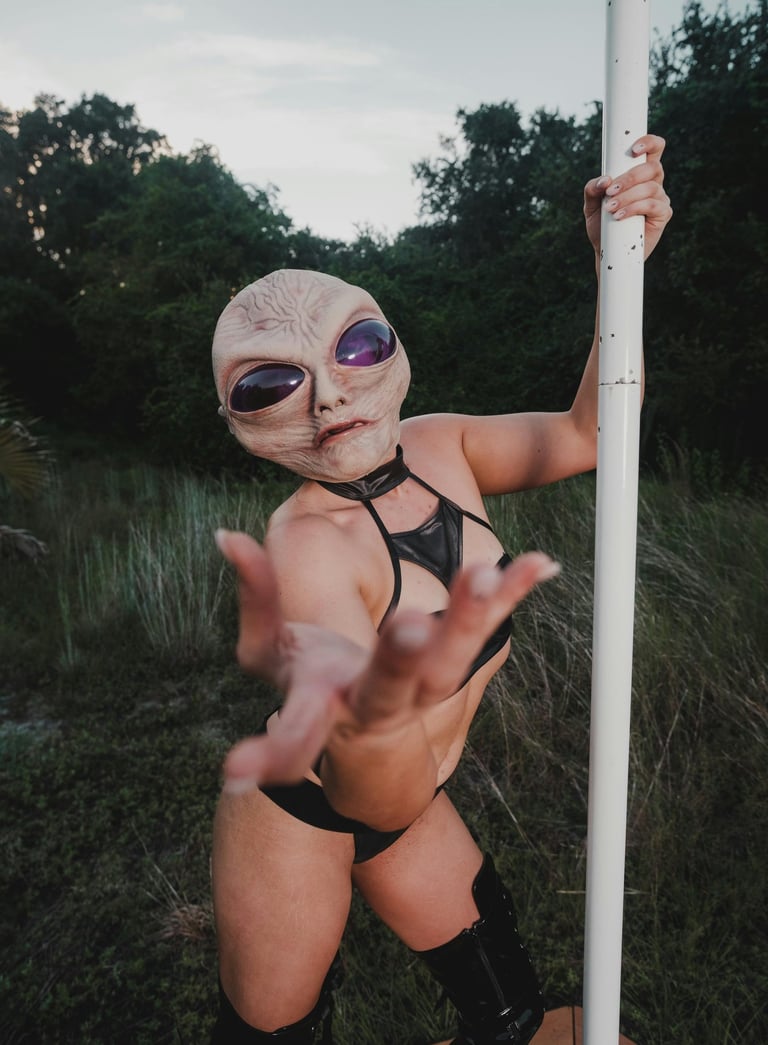Witches, Strippers, and the Art of Mystical Seduction
Witches. Not the wart-nosed, broom-riding variety; the ones who move like smoke and leave a trail of hypnotized spectators in their wake. The kind of enchantresses who, with a well-timed split, will have entire rooms spellbound. Now, consider this: is there a thin, glittery, neon-lit line between a spellbinding sorceress and a world-class exotic dancer? Get ready to dive broomstick-first into the tantalizing intersection of mysticism and striptease. Yup it's always been a "thing".
The Power of Music and Dance in Ritual
Historically, dancing has played a significant role in magical practices. From the Bacchanalian rites of ancient Rome to voodoo ceremonies pulsing with rhythmic possession, movement has long been a vehicle for spiritual connection. In modern witchcraft, dance remains a tool for raising energy, connecting to the divine, and—if done correctly—summoning a few willing admirers to do your bidding in the process. And who, pray tell, understands this better than an exotic dancer who knows how to command a room with just the right blend of allure, enticement and mystery?
According to sources like High Priestess, music and movement create a kind of ritual magic, drawing people into a shared experience of heightened emotion. Now, replace 'movement' with 'a flawless pole routine set to Nine Inch Nails,' and suddenly, we’re speaking the same language.




Quick rant:
Alright, can someone please explain to me why ballerinas are held in such ridiculously high regard? I mean, seriously—ballet is the definition of a snoozefest! The music? Slow and sleepy. The storylines? If you can even follow them, they’re usually some tragic nonsense. And the dancers? They either look like they just got bad news or like they’re concentrating way too hard on standing on their poor, mangled toes. And don’t even get me started on the aesthetic. That hair—always yanked back into the most uptight, librarian bun possible. No personality or flair, just rigid, no-nonsense ballerina mode activated. Their bodies are shapeless with these ultra-defined legs that seem to be the only thing anyone cares about. Meanwhile, their feet are basically horror movie material—bloody, blistered, and bandaged like they just went to war instead of dance class.
And what’s the reward for all this suffering? A round of polite applause from a bunch of well-dressed hoi palloi people pretending they’re having the time of their lives when they’d rather be anywhere else. Strippers actually deliver a show worth watching. I don't know if you all ever noticed that exotic dancers are a bit sprier. At least they know how to put on a performance that keeps the audiences engaged. They have confidence, and have fun, and let’s be real—they probably make way more money too. So why are we out here acting like ballet is some sacred, untouchable art form while people who actually put on an entertaining performance get looked down on? Be honest already. . .. . Giselle or a Cabaret? lmao, uhuh. It’s time to admit it—ballet is overrated, outdated, and frankly, kind of wiggedy-wiggedy-wiggedy-wack!
The Power of the Gaze: Hexing 101
Ever heard of the evil eye? It’s the idea that a gaze, when charged with enough energy, can influence another person’s reality. This is Witchcraft 101. Now, consider the gaze of a skilled performer who locks onto a patron, holds their stare, and makes them forget how to breathe. That’s not just stage presence—that’s a hex wrapped in fishnets.
Interestingly, many strip clubs advise dancers to avoid direct eye contact, encouraging them to stare at the wall instead, creating an air of detachment. But the most compelling performers break this rule, much like the classic enchantress who knows the power of a simple well-timed look from eyes lined with wings. Just like in Tina Turner’s Private Dancer, there’s a contradiction at play—the performer is expected to create an intimate illusion without actually engaging. And yet, those who do engage, who allow their gaze to linger just long enough to tap into a force more potent than stage lighting: genuine connection, even if it’s fleeting and transactional.... Oh, and strictly for the purpose of monetary gain.
Beyond eye contact, another unspoken rule of the trade is to move on quickly after a performance. Linger too long, and the spell begins to break. And yet, just as witches might linger in the shadows after casting their spells, many dancers intuitively remain close, observing, absorbing, and subtly extending their influence. This lingering presence, though discouraged, keeps patrons ensnared in the afterglow of the performance, prolonging the magic just a little longer.
Eye contact is more than just a flirtation tactic—it’s a business strategy. Studies and firsthand accounts from dancers indicate that making and holding eye contact with patrons can increase tips by as much as 50%. The reasoning is simple: direct gaze creates a sense of intimacy, making the patron feel seen, desired, and, most importantly, more willing to part with their cash. A dancer who masters this can turn a standard set into a financial windfall, weaving an unspoken spell of intimacy that keeps wallets open and the money flowing.




